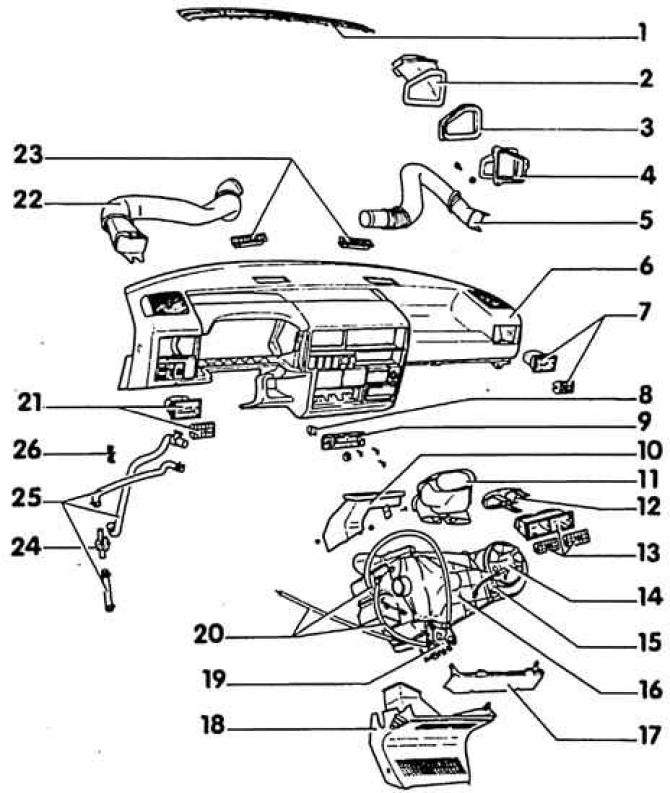Heating system device

1. Hood grille; 2. Front intake pipes; 3. Gasket; 4. Rear inlets (on the cross wall); 5. Right air duct; 6. Instrument panel; 7. Right air deflector; 8. Heater fan switch; 9. Heater control panel; 10. Defroster intermediate piece; 11. Middle air duct; 12. Intermediate piece; 13. Middle air deflector; 14. Heater motor; 15. Preliminary resistance of the heater motor; 16. Heater; 17. Shield; 18. Console air deflector at the feet of the driver; 19. Heating regulator; 20. Heating cables; 21. Left air deflector; 22. Left air duct; 23. Defroster deflector; 24. Regulating valve; 25. Coolant hoses; 26. Piping clip
Fresh air for heating enters the passenger compartment through the inlet pipes and the heater. In this case, the air washes the heater fan housing and is distributed through various dampers to the individual air deflectors. If the heating is set to "Warn" - warm, the air is heated in the radiator. The heat exchanger is located in the heater and is heated by hot coolant. Passing air is heated on hot lamellas (plates) heat exchanger and then enters the salon.
Heating (cabin temperature) is controlled by a valve that controls the amount of hot coolant passing through the heat exchanger. The air dampers and the heating valve are controlled by levers via flexible cables.
To enhance the heating, a four-stage heating fan motor is used. In order for the heater fan to rotate at different speeds, resistors are connected. The resistors are on the connection board. In the event of a malfunction, the connection board is completely replaced.
Depending on the model, there may be a second heat exchanger in the rear of the cabin (or in the trunk).
Special equipment
As heating when the engine is not running and additional heating, both water and air circulation heating are offered. Air conditioning is available upon request. Repairing these systems requires professional skills and factory instruments, so in case of malfunctions, you must contact the service station.

Visitor comments